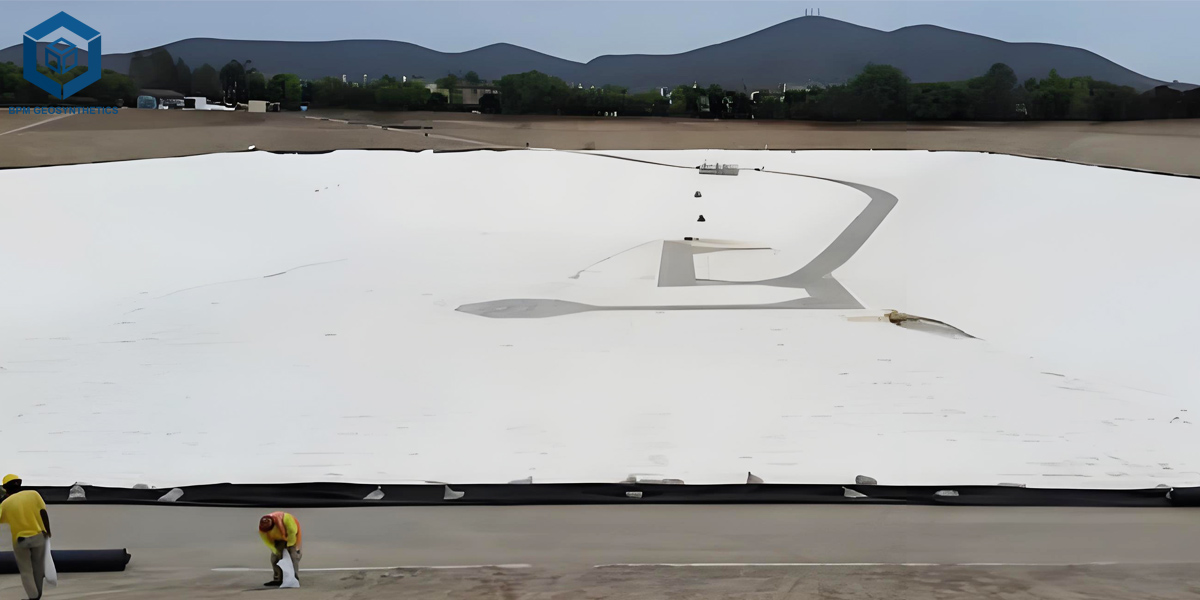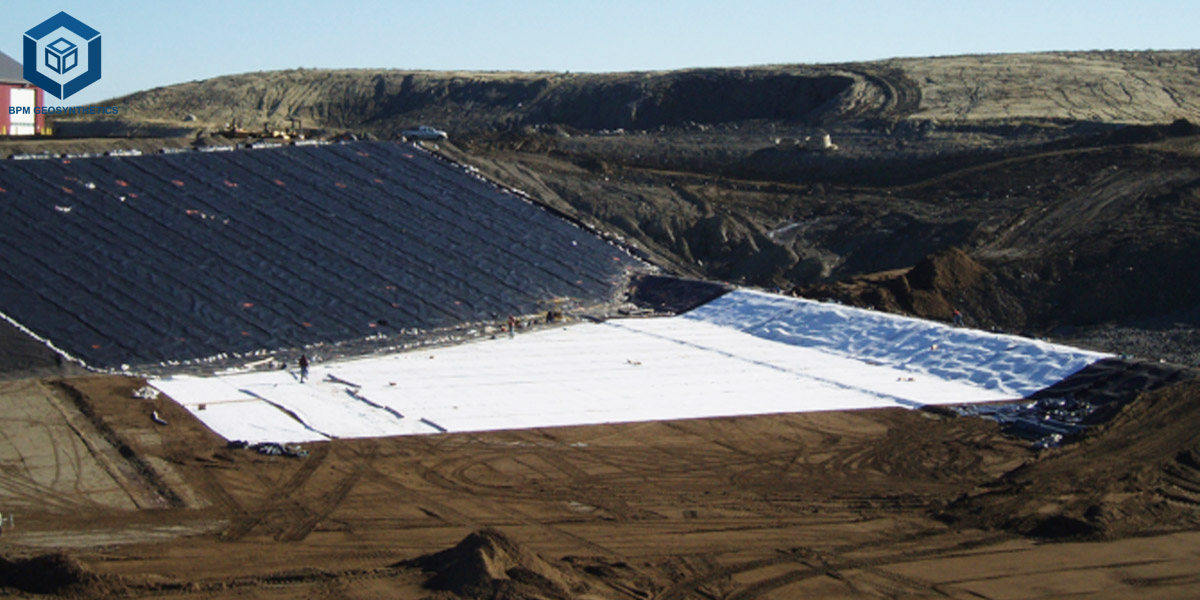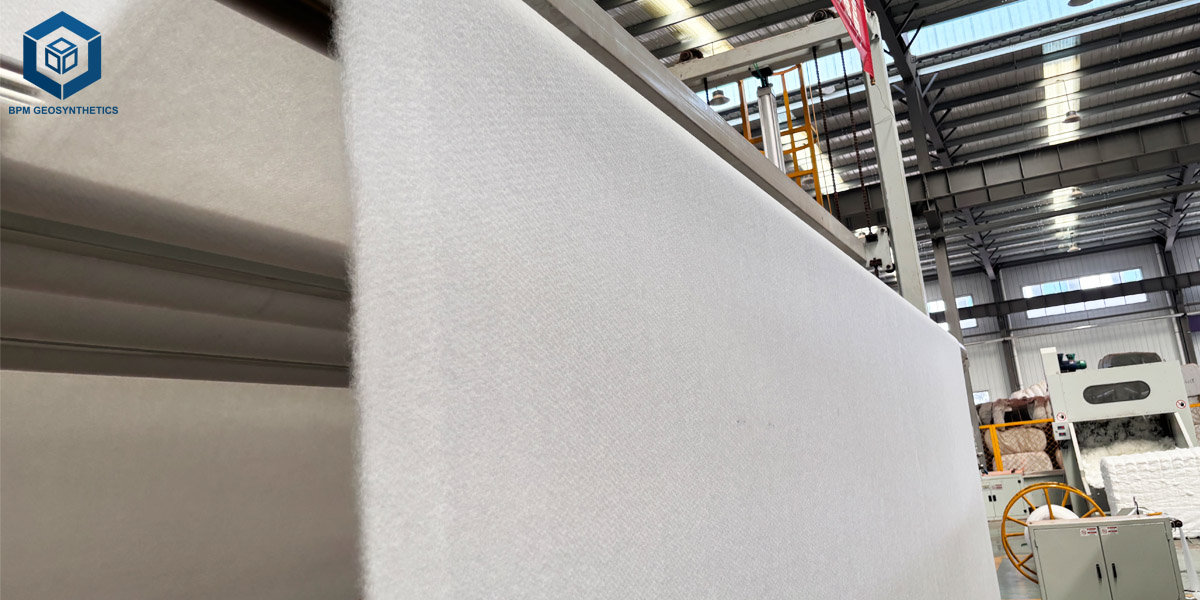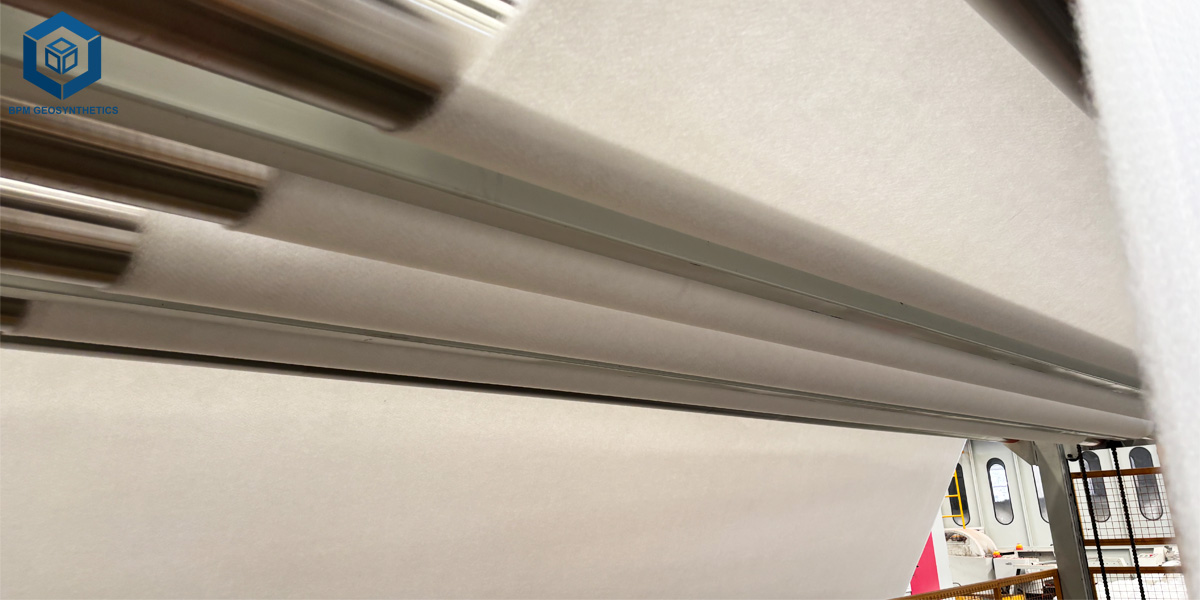Geotextile Material
Our high-quality geotextile fabric is designed for long-lasting overall performance in development and landscaping projects. They supply exceptional filtration, separation, reinforcement, and drainage, making sure soil balance and venture durability.
- Durable & Strong: Resistant to tears, punctures, and environmental stress.
- Versatile Applications: Ideal for street construction, erosion control, drainage, and landscaping.
- Enhanced Filtration: Prevents soil erosion whilst permitting water flow.
- Easy Installation: Lightweight, flexible, and convenient to cope with on-site.
- Environmentally Friendly: Made from high-quality, non-toxic materials.
Our high-performance geotextile materials is mainly engineered to supply long-lasting options for soil stabilization, erosion control, and environment friendly water administration in each civil engineering and landscaping projects. Utilizing superior woven and non-woven manufacturing technologies, these geotextile fabric provide fantastic tensile strength, durability, and versatility. They are designed to stand up to harsh environmental conditions, heavy loads, and long-term use, making them an essential aspect in modern-day construction, infrastructure development, and environmental safety projects. With these geo fabric materials, you can beautify task efficiency, make certain structural integrity, and gain sustainable results.
1. Geotextile Material Types
1.1 Woven Geotextile Material
Woven geotextile is created through interlacing high-strength fibers in a unique weave pattern, supplying magnificent tensile electricity and minimal elongation. These fabric geotextile is in particular designed for soil reinforcement, load distribution, and stabilization in buildings such as roadbeds, embankments, and holding walls. Their strong development approves them to withstand punctures, tears, and deformation below heavy loads, making sure long-term sturdiness and dependable overall performance in traumatic civil engineering projects.
1.2 Non Woven Geotextile Material
non woven geotextile fabric is produced via needle-punching or spunbonding techniques, ensuing in a fabric-like sheet with gorgeous permeability and filtration properties. They are best for filtration, separation, and drainage applications, stopping soil migration whilst permitting water flow. Lightweight and flexible, nonwoven geotextile is handy to cut, handle, and install, making them appropriate for erosion control, street construction, landscaping, and drainage systems. Their capacity to keep soil integrity whilst improving water administration makes them a versatile desire for many engineering projects.
1.3 Composite Geotextile Material
Composite geotextile mix the strengths of each woven and non-woven fabric into a multi-layer material. These geotextiles furnish simultaneous reinforcement, filtration, and drainage, making them perfect for complicated and specialised engineering tasks such as landfill liners, slope stabilization with built-in drainage, and heavy civil infrastructure applications. By supplying multi-functional overall performance in a single product, composite geotextiles decorate durability, longevity, and efficiency, decreasing the want for more than one separate substances on-site.
2. Geotextile Material Key Applications
2.1 Geotextile Material for Road Construction & Pavements
Non woven geotextile is broadly used in roads and pavements to enhance structural performance. They forestall subgrade soil from mixing with mixture layers, beautify load distribution, and expand the lifespan of pavements, efficaciously decreasing preservation fees and improving visitors safety.
2.2 Geotextile Material for Landfills & Waste Containment
In landfill and waste containment systems, non woven landscape fabric act as defensive layers in lining systems. They assist geomembranes, enhance drainage, and stop soil erosion, assisting to incorporate waste and limit environmental contamination.
2.3 Geotextile Material for Erosion Control & Slope Stabilization
Woven geotextile fabric supply soil reinforcement on slopes and embankments, lowering the danger of landslides and washouts. They stabilize soil, permit water passage whilst stopping soil loss, and assist vegetation growth, which is necessary for long-term erosion control.
2.4 Geotextile Material for Drainage Systems
Geo fabric beautify the overall performance of drainage structures such as French drains, trenches, and subsurface drainage. They permit water to drift freely whilst filtering pleasant soil particles, stopping clogging and making sure environment friendly water administration in each civil and landscaping applications.
2.5 Geotextile Material for Landscaping & Green Projects
In landscaping, parks, golf courses, and inexperienced city areas, geofabric shield soil, help turf establishment, and decorate floor durability. They grant a steady base for planting and taking walks surfaces, enhance soil aeration, and facilitate long-term preservation of vegetation.
3. Geotextile Material Key Features & Benefits
3.1 Exceptional Strength & Durability
Geotextile drainage fabric is manufactured to supply excessive tensile power and resistance to mechanical damage. They can face up to punctures, tearing, and heavy hundreds at some stage in set up and provider life. Additionally, they are UV-resistant, making sure long-lasting overall performance even below extended daylight publicity in out of doors projects.
3.2 High Permeability & Filtration
Geotextile filter fabric keep environment friendly water waft whilst stopping soil particles from passing through, making them perfect for filtration and drainage applications. They limit erosion and sediment migration, making sure soil steadiness in roads, slopes, maintaining walls, and drainage systems.
3.3 Easy to Handle & Install
Geo cloth is lightweight, flexible, and handy to cut, permitting rapid and environment friendly on-site installation. Their adaptability reduces labor and gear costs, and they conform nicely to uneven surfaces, making them appropriate for a range of civil engineering, landscaping, and drainage projects.
3.4 Chemical & Biological Resistance
High-quality geotech cloth is resistant to a huge vary of chemicals, along with acids and alkalis, and can stand up to microbial recreation in soil and water environments. This ensures dependable overall performance in harsh or contaminated conditions, making them appropriate for landfills, wastewater projects, and industrial applications.
3.5 Environmentally Friendly
Geotextile drainage is made from recyclable, non-toxic polymers, helping sustainable building practices. They limit environmental have an effect on by using minimizing soil erosion and defending herbal water systems, making them a accountable preference for infrastructure, landscaping, and inexperienced projects.
4. Geotextile Material Technical Specifications
4.1 Material Composition
Geotextile filter cloth is normally made from first-rate artificial fibers such as Polypropylene (PP) or Polyester (PET). These substances grant first-rate chemical resistance, durability, and tensile strength, making the geotextiles appropriate for long-term civil engineering, landscaping, and drainage applications.
4.2 Thickness
The thickness of geo fabric material substances degrees from 0.5 mm to 10 mm, relying on the kind of utility and load requirements. Thinner fabric are regularly used for filtration and separation, whilst thicker fabric furnish reinforcement and excessive load-bearing abilities in roads, slopes, and maintaining structures.
4.3 Weight
Nonwoven geotextile fabric weight normally stages from one hundred g/m² to one thousand g/m². Lighter fabric are convenient to deal with and install, appropriate for drainage and erosion control, whilst heavier fabric provide increased electricity and sturdiness for avenue construction, landfill liners, and slope stabilization.
4.4 Tensile Strength
Geotextile fabric under gravel have a tensile electricity vary of 20–200 kN/m, permitting them to stand up to heavy masses and mechanical stress. This property ensures that geotextiles fortify soil structures, stop deformation, and keep structural steadiness over time.
4.5 Elongation
Elongation normally stages from 20–50%, relying on whether or not the geotextile is woven or non-woven. Woven geotextiles generally have decrease elongation however greater strength, whilst non-woven geotextiles provide greater elongation, permitting them to adapt to uneven surfaces and take in stress except tearing.
4.6 Permeability
Geotextile landscape fabric showcase permeability in the vary of 10⁻³–10⁻¹ cm/s, enabling environment friendly water drift whilst filtering soil particles. This ensures desirable drainage, reduces erosion, and prevents clogging in purposes such as French drains, subsurface drainage systems, and slope stabilization.
5. Why Choose Our Geotextile Material?
5.1 Reliable Performance in Harsh Conditions
Our non woven geotextile drainage fabric substances are engineered to stand up to severe environmental conditions, which includes UV exposure, chemical contact, moisture, and mechanical stress. This ensures long-term sturdiness and steady overall performance in functions such as street construction, landfills, drainage systems, and slope stabilization.
5.2 Multi-Functional Use Across Civil, Industrial, and Environmental Projects
Our geotextile road fabric is versatile and adaptable, appropriate for a broad vary of applications. They can be used for soil reinforcement, erosion control, drainage, filtration, and environmental protection. This multi-functional functionality approves them to serve in civil engineering, industrial projects, landscaping, and water administration systems.
5.3 Supported by way of Strict Quality Control and International Standards
Each batch of non woven geotextile landscape fabric is produced below stringent best control measures, making sure steady cloth strength, permeability, and durability. Our merchandise comply with global standards, giving purchasers self assurance in performance, reliability, and long-term task success.
5.4 Customizable Dimensions, Thicknesses, and Specifications
We furnish bendy preferences to meet unique challenge requirements, which include customizable roll widths, lengths, thicknesses, and weight per rectangular meter. This lets in consumers to tailor the geo textile material to soil conditions, load requirements, and sketch specifications, making sure top of the line overall performance and fee efficiency.
Conclusion
Whether you are setting up roads, stabilizing slopes, putting in drainage systems, or enforcing environmental safety projects, The Best Project Material Co., Ltd.(BPM Geosynthetics)’ geotextile substances provide a durable, cost-effective, and environmentally pleasant solution. Our merchandise are designed to decorate structural performance, enhance safety, and lengthen the carrier existence of your infrastructure projects.
With strict high-quality control, customizable specifications, and multi-functional applications, BPM geotextiles are the depended on preference for civil, industrial, and environmental tasks worldwide.











